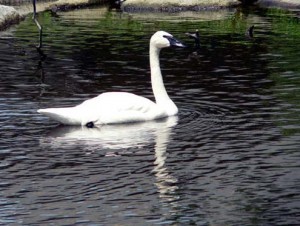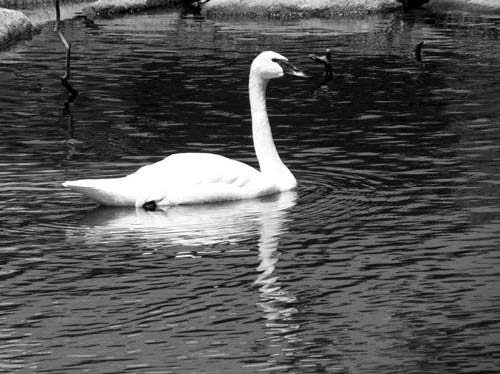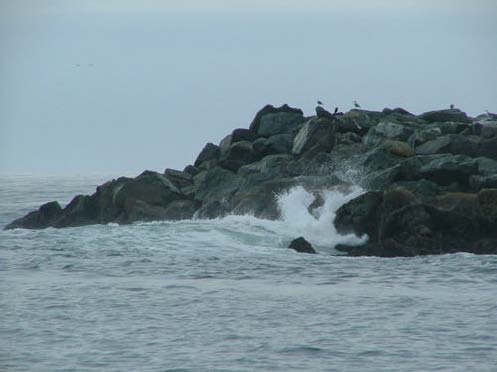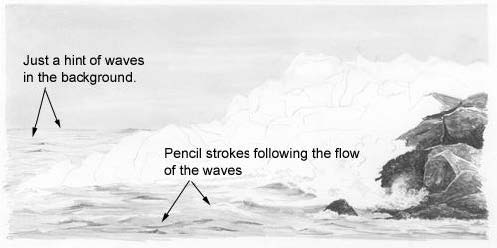How to Draw Water in Pencil
Water. It is the most majestic element in nature. There is nothing more meditative or soothing than the rhythmic sound of waves crashing on a beach, or the soft rippling of a small stream. There are oceanscapes, harbors, piers, reflections, seashores, rivers, streams, waterfalls, lakes and even just puddles.
Our water landscape possibilities are endless. But without the tools to understand how to draw water, we become overwhelmed as to the task of how we’re suppose to draw it!! All those ripples, waves, reflections….oh my!! So we put our favorite scenes away, hoping to be braver another day. Does that sound familiar?
Lesson Goal:
The goal of this lesson is two fold – we are going to explore how to draw water, but more importantly we are going to review the process of observation, analysis and interpretation, the “tools” that will allow us to draw any subject matter, no matter how complex.
That’s a pretty tall order, but I think we can accomplish it.
The Power of Observation.
Before I got brave enough to pick up my pencil in 2002, I spent a couple years just looking. I got my first digital camera and started to take photos of everything. I began to open my eyes and look around me. It is amazing what you see when you really start “looking”.
“The more you look, the more you see. The more you see, the more you understand.”
To experience a landscape you must visually, mentally, emotionally and physically observe it.
Not all of us have the opportunity to draw plein air (on location). So we use photographs. We need to be aware of the limitations of using photographs. One of these short-comings is It flattens the view to 2-dimensions. You can’t see what is tucked behind an object. If you didn’t take the photograph -you have to take additional steps to ‘become connected” to a scene. You need to mentally envision walking through your scene. Do research…look at various reference photos at different angles to help you “understand” what you are looking at. Feel the textures, feel the wind on your face, or the spray of water at your feet. This “understanding” what you are seeing, is the power of observation.
So let’s look at our first image. Courtesy of Aleksandra Freeman . Aleksandra captured a beautiful swan swimming. The swan is so simple and I’m itching to draw it, but oh that water and reflections! How do we begin?

The Analysis
We know it is water, we know it is fluid, transparent and reflective. We know the swan is swimming in the water and we know we are seeing the swan’s reflections in the water. We KNOW all of this from the first step – observation.
This step is to analyze what we are seeing in the image. By breaking this image down into smaller sections. We can identify ‘clues’ that will help us draw the characteristics of water that makes it…water.
By changing our focus to just the water and looking at it in an “abstract” format, it will allow us to analyze just what we are “SEEING”.
I cropped the image so we can concentrate on the water reflections. I posterized the image (a Photoshop feature) to reduce the number of values seen and turned the photo into grayscale. I am abstracting and simplifying the image.
Now it doesn’t look overwhelming – I can now study the movement of the waves, the shapes, and the values. I have broken this complex image into simple shapes and values. I have reduced this into something I can grasp.
I can do sketches at this point to identify the most prominent waves, I can map out my values for my composition. This is the analysis stage that helps me grasp what I am looking at.
CAUTION: Do not create your final drawing from this stage. Your drawing will take on these qualities of abstractness, lifelessness and looking flat.

The Interpretation
Here is the step that is the most exciting and where each artist’s interpretation immerges. Let’s return to B&W image of the swan. Does it look less overwhelming now? To me, the water is now nothing more than values and shapes.
But since we don’t want to just draw “values and shapes”, we need to interpret and decide what clues to include. It is just as important to decide what not to include as well. Things to consider is what is the focus of the drawing? Is it the swan or the reflection of the swan? We don’t want to over-emphasize the reflections if the swan is the focal point.
We’ve done our preliminary observation and analysis of our subject matter. The interpretation is the where the creative license of the artist begins!
Try your hand at drawing the swan and the water reflections. Study the image, see what you can find as ‘clues’ that will help provide the viewer to recognize that this swan is swimming in water.
OR Choose your own photo reference with reflections in the water. Boats and harbors are wonderful subject matters.
Post your results and your ideas of this process. Did it help? What clues did you discover?

Oceans & Waves
Not all landscapes involve up-close images such as the swan swimming. Ocean or seascapes require a completely different type of interpretation and representation.
This might seem a bit simplistic, but no matter how I try to illustrate how to draw water, I seem to end up with this approach. Do you remember your first drawing of a boat in water? Remember that one line of waves under that boat? Well, that’s basically the pencil stroke I use!!
Here is an example of the horizontal rocking back and forth, overlapping my strokes. The strokes are much smaller and shorter for the distant waves. By concentrating on the under shadows of the waves, my water seems to just appear.

Try drawing waves. This image keeps these to a minimum and just a splash on the rocks. It’s a simple composition but looks can be deceiving!!
This reference photo is courtesy of scratchboard artist, Karen Hendrickson of Oregon. Iowa doesn’t have any oceans, so Karen keeps me stocked with beautiful photos from her own “backyard”.


Here is the completed seascape.

I hope you enjoyed this tutorial on how to draw water in pencil by Diane Wright.
About Diane Wright
In 2002, I picked up my art pencil again after 20+ years. During this break, I devoted my time to my family and building a career. Even though I earned my Bachelor of Fine Art degree at the University of Northern Iowa, my career path ventured away from the fine arts. I am currently an IT Manager at a medical auditing firm in Des Moines, IA. My children are in college and it’s now time for me to explore my arts again! I live with my wonderful husband, Les, in the small town of Mitchellville, Iowa.
– Diane Wright
To learn more about Diane and to view her work, please visit her website: http://www.dianewrightfineart.com/
your treatment of water with pencil is making me very envious, keep up your good work
mick
Dear Mrs, Diane wright,
Thank you for your lesson about drawing with pencil/color pencil, I’m very appreciate and I will try to learn by your way of analysis,thank you.
I began to learn in drawing in 1990 during in High school,and after that I do not learn to drawing and now in my 67 of age,I continue to learn Chinese painting and acrylic and now I will learn in pencil drawing in my 70 of age.Thanks God.
Thanks!, im’ just a beginner, I lover the sea & these simple instructions will make drawing waves easier!
Great work. Your are doing amazing. I guess it quite tough to show this kind of drawings, as it requires lot of natural perspective from the viewers and you are going in very right direction so just keep it up:)
Dear Mrs. Write,
Thank you a lot. I have waited for such an opportunity to learn to draw water for more than 40 years!!. Water is alway very difficult to draw or paint. I am very happy I had found your tutorial.
Thank you kindly. On my second, work after years to complete the first, with your tutelage. This is very good work; and the drawings.
wh
wn I saw your sitw I fwlt a teacher in my solitary. plz help me I also have craz of sketching. I have many but in the end of all sketch I am never satisfied. I want to share my sketches for your guidance
Hi, I’m just a beginner and I’m really thankful for this tutorial. When it comes on water and waves, I’m always afraid of doing it because I think is very complicated and I just can’t. But now I learn something and it is because of you thank you.
Thank you for this Diane. I am using one of your “Sketching made easy” pieces from an art store, and I just could not figure out how to do the stream splashing over the log. This helps!
It didn’t really help me, but helps heaps of other people! Keep up the fabulous drawings and I will hopefully be impressed next time!
Thank you so much! You are a great teacher!! I’m a new artist at 48! The way that you have taken something that feels overwhelming & have deconstructed it makes me feel so much less intimidated! Now I’m excited about water!!